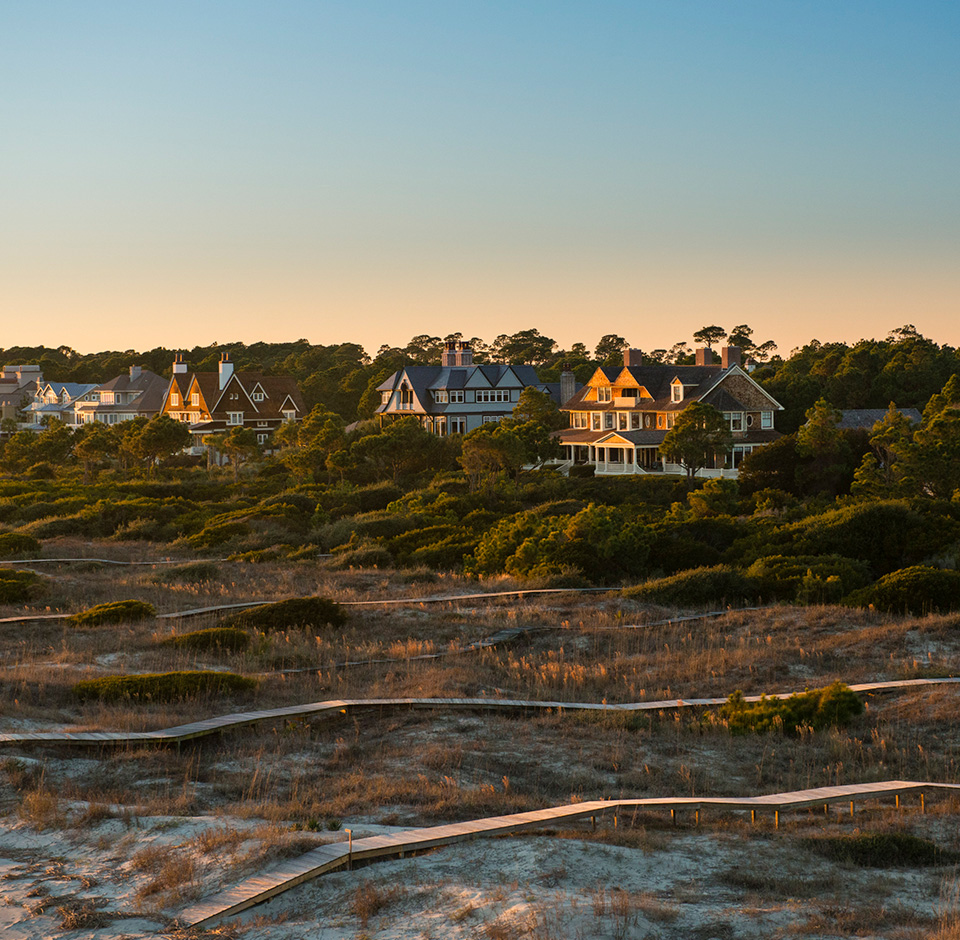
Designing
With Nature
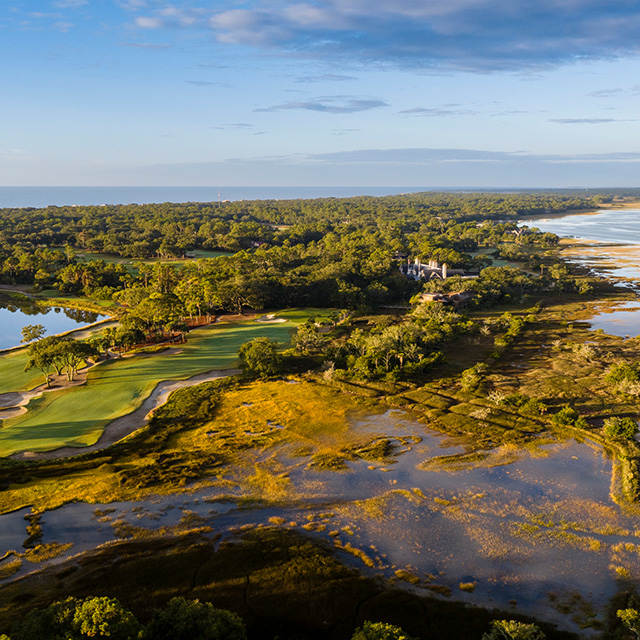
A Blueprint for Better Development
Kiawah Island is widely recognized for executing an environmentally sensitive master plan. Maintaining sustainable development in a community blessed with such raw, natural beauty requires a skill in creating within a native framework. Fortunately, South Street Partners, the current guardians of the Island’s environmental community plan, is wholly committed to furthering Kiawah’s excellence in nature stewardship–continually reminding us that nature, itself, is the star attraction here.
Our mission is to maintain the delicate balance between the natural world and our relationship with it. With a multi-disciplinary approach toward designing with nature, and as stewards of Kiawah Island’s unique barrier island landscape, Kiawah Partners’ long-term vision includes thoughtful, connected and balanced built environments. To enhance the lives of the Island’s residents and guests while protecting Kiawah’s wildlife, species and shoreline estuaries, Kiawah Partners collaborates with trailblazers in architecture and conservation, the Urban Land Institute and local leaders.
A Blueprint for Better Development
Kiawah Island is widely recognized for executing an environmentally sensitive master plan. Maintaining sustainable development in a community blessed with such raw, natural beauty requires a skill in creating within a native framework. Fortunately, South Street Partners, the current guardians of the Island’s environmental community plan, is wholly committed to furthering Kiawah’s excellence in nature stewardship–continually reminding us that nature, itself, is the star attraction here.
Our mission is to maintain the delicate balance between the natural world and our relationship with it. With a multi-disciplinary approach toward designing with nature, and as stewards of Kiawah Island’s unique barrier island landscape, Kiawah Partners’ long-term vision includes thoughtful, connected and balanced built environments. To enhance the lives of the Island’s residents and guests while protecting Kiawah’s wildlife, species and shoreline estuaries, Kiawah Partners collaborates with trailblazers in architecture and conservation, the Urban Land Institute and local leaders.
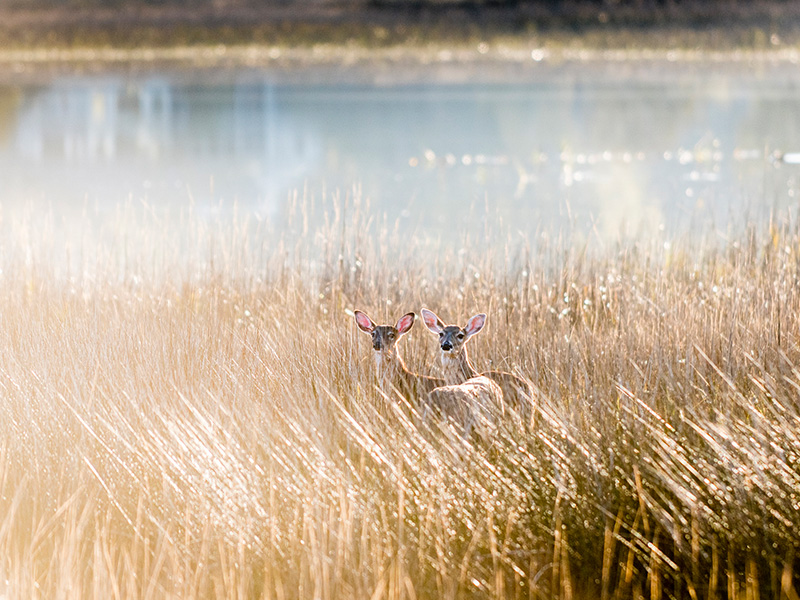
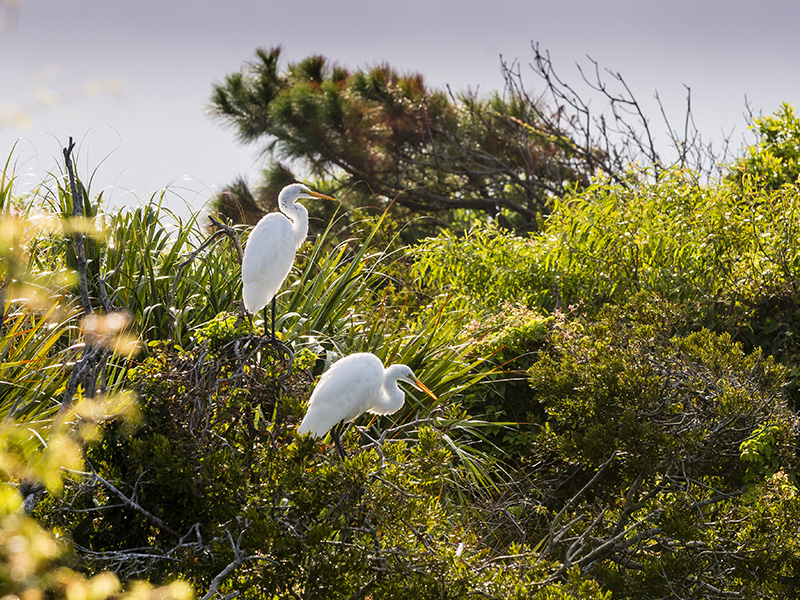

Back to the Beginning
To understand how the concept of designing with nature has remained constant during the development of Kiawah, one has to go back a few decades. The contemporary history of Kiawah began in 1974. Before that time, there were few property owners and attempts to settle Kiawah agriculturally failed because of tough coastal conditions. However, many who were and are still involved in the development and preservation of the Island understood the twofold significance of Kiawah – it being an environmentally sensitive landscape and serving the greater community as a private premier residential and resort community.
It is the reason a multidisciplinary approach was crucial, and it is the crux of what defines Kiawah Island then and now. The initial planned development district application, presented by the Kiawah Beach Company in 1974, was a comprehensive assessment which set forth the preliminary principles of designing with nature. A collaboration between county officials, community developers, planners and consultants resulted in a comprehensive plan to ensure “sound environmental planning and management.”
In 1974, the Kuwait Investment Corporation purchased Kiawah Island and hired the Sea Pines Company to develop a master plan which included 7,000 units to be constructed on the Island, with 600,000 square feet of commercial space, retail sales and an unlimited number of hotel accommodations.
Over the next four plus decades, even with the land changing ownership, the designing with nature concept remained a constant, was at the forefront of development decisions, and became further enhanced over the decades.
Back to the Beginning
To understand how the concept of designing with nature has remained constant during the development of Kiawah, one has to go back a few decades. The contemporary history of Kiawah began in 1974. Before that time, there were few property owners and attempts to settle Kiawah agriculturally failed because of tough coastal conditions. However, many who were and are still involved in the development and preservation of the Island understood the twofold significance of Kiawah – it being an environmentally sensitive landscape and serving the greater community as a private premier residential and resort community.
It is the reason a multidisciplinary approach was crucial, and it is the crux of what defines Kiawah Island then and now. The initial planned development district application, presented by the Kiawah Beach Company in 1974, was a comprehensive assessment which set forth the preliminary principles of designing with nature. A collaboration between county officials, community developers, planners and consultants resulted in a comprehensive plan to ensure “sound environmental planning and management.”
In 1974, the Kuwait Investment Corporation purchased Kiawah Island and hired the Sea Pines Company to develop a master plan which included 7,000 units to be constructed on the Island, with 600,000 square feet of commercial space, retail sales and an unlimited number of hotel accommodations.
Over the next four plus decades, even with the land changing ownership, the designing with nature concept remained a constant, was at the forefront of development decisions, and became further enhanced over the decades.
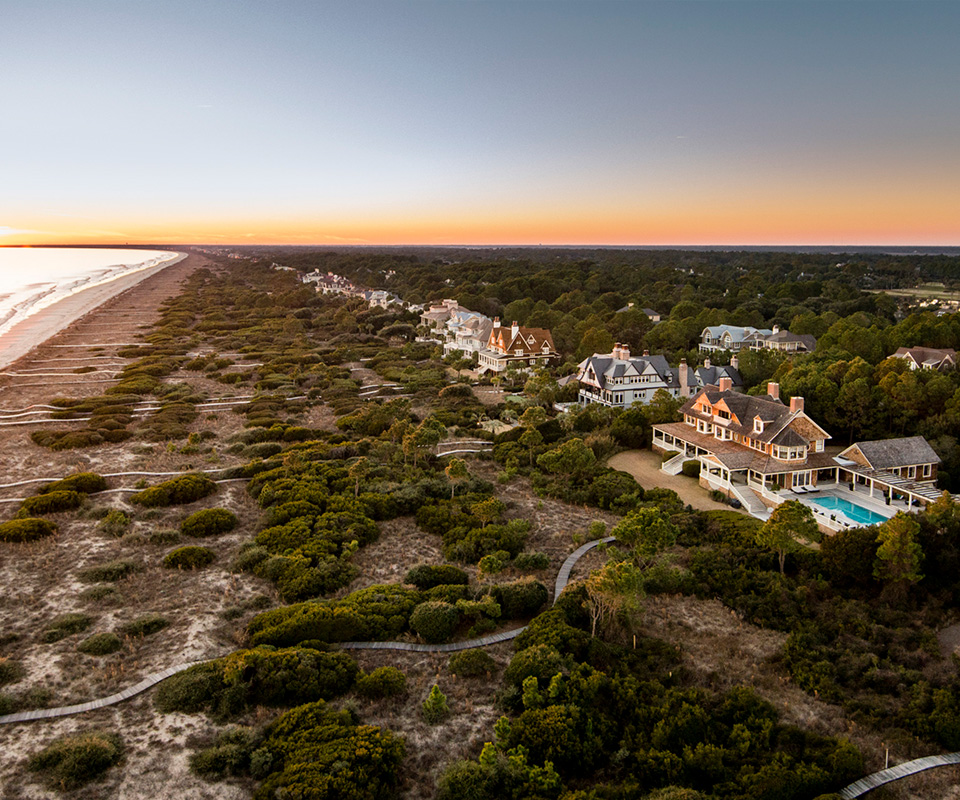
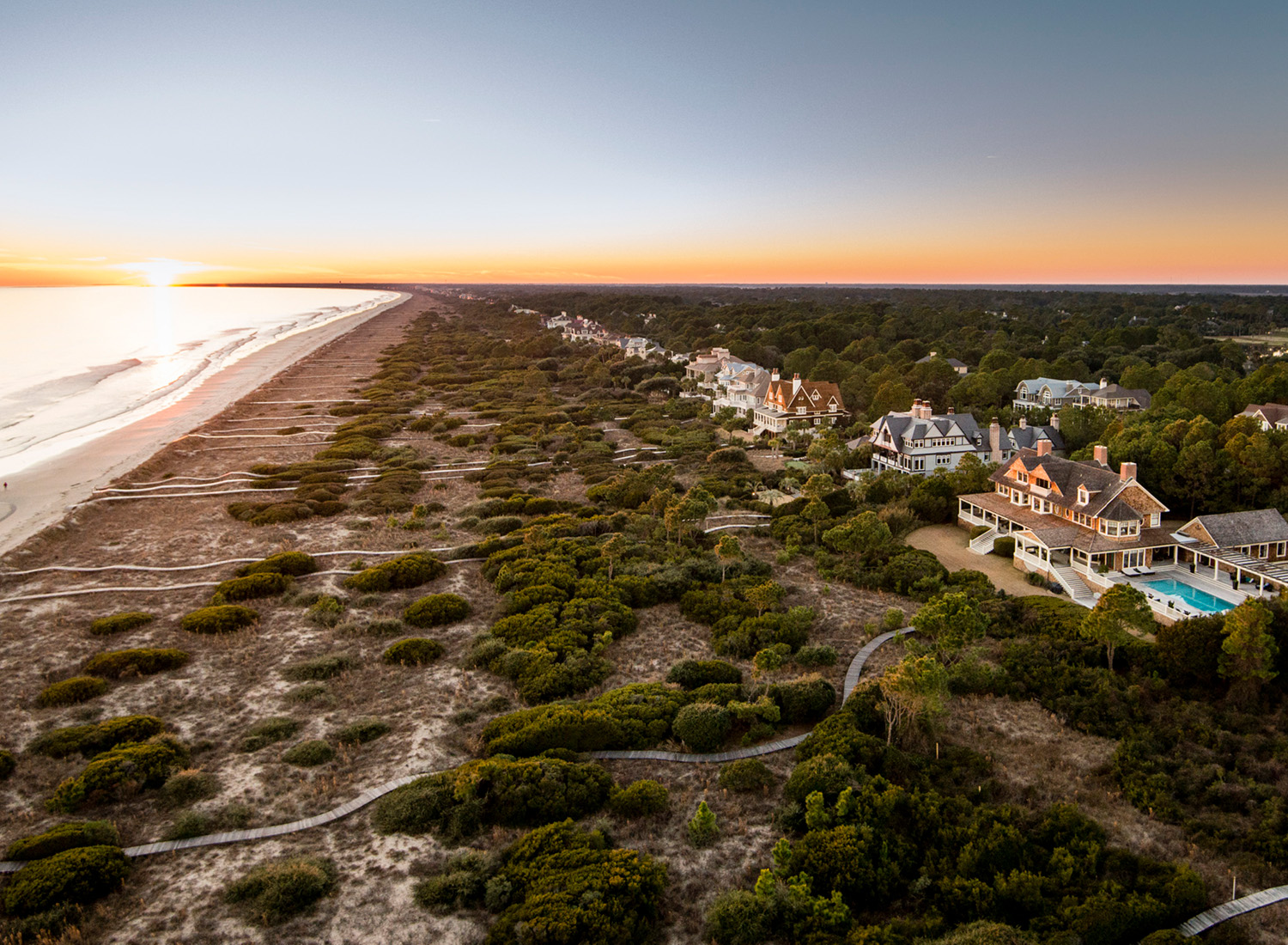
Bringing the Vision to Life
In 1974, the economy was flat with high inflation, an energy crisis and an oil embargo. A tough time to start such a major project. Developing the Island was, by far, one of the most complex community infrastructures with its mix of residents, part-time residents, guests, visitors and employees. But, it kick-started a necessary economic boost to the Lowcountry and an opportunity to spur employment and an opportunity to enhance an Island that has been long regarded as a Lowcountry gem.
In 1975, Sea Pines elicited the help of The Environmental Research Center, Inc., to conduct an ecological and environmental study. The 16-month study resulted in substantial findings, using aerial photos, maps, soil samples, grain analysis and beach profiles. Maritime forests, which cover the core of the Island, are and were, according to the study, “… the most stable ecosystem on Kiawah.” Calculated decisions agreed upon by biologists, conservationists, consultants, architects, financial planners, investors, professors and doctors of various disciplines were involved in Kiawah Island’s development.
Keepers of the Vision
In 1976, The Kiawah Island Company established an Architectural Review Board, or ARB. The ARB’s intent, aligned with the designing with nature concept, has been to “achieve an uncommon and visually pleasing blend of natural beauty and man-made improvements,” and to be “… dedicated to preserving a unique and ecologically sensitive community.” (Designing with Nature, ARB Standards and Guidelines).
What followed over the next decades was a re-thinking of how to stay true to the original vision, while bringing in adequate resort facilities to cater to guests and visitors, and to think of Kiawah Island as more than just a resort-centered development. Single-family homes, cottage-style homes and townhomes were and are built to blend with the Island’s natural environment. Each structure is subject to extensive deed restrictions, covenants and ARB guidelines. Decisions made regarding removal of foliage in specific areas are balanced by plans to bring in future natural environments with landscaping and other means.
Kiawah Island’s evolution remained fluid, and evidence of a consistent design with nature navigation is this: Kiawah Island is a more balanced community-type private entity, far more so than its original resort intensive plan. To date, Kiawah Island has approximately 5,400 units including future entitlements.
Keep exploring the complete history and timeline of Kiawah Island on our Island Insights page.

Keepers of the Vision
In 1976, The Kiawah Island Company established an Architectural Review Board, or ARB. The ARB’s intent, aligned with the designing with nature concept, has been to “achieve an uncommon and visually pleasing blend of natural beauty and man-made improvements,” and to be “… dedicated to preserving a unique and ecologically sensitive community.” (Designing with Nature, ARB Standards and Guidelines).
What followed over the next decades was a re-thinking of how to stay true to the original vision, while bringing in adequate resort facilities to cater to guests and visitors, and to think of Kiawah Island as more than just a resort-centered development. Single-family homes, cottage-style homes and townhomes were and are built to blend with the Island’s natural environment. Each structure is subject to extensive deed restrictions, covenants and ARB guidelines. Decisions made regarding removal of foliage in specific areas are balanced by plans to bring in future natural environments with landscaping and other means.
Kiawah Island’s evolution remained fluid, and evidence of a consistent design with nature navigation is this: Kiawah Island is a more balanced community-type private entity, far more so than its original resort intensive plan. To date, Kiawah Island has approximately 5,400 units including future entitlements.
Keep exploring the complete history and timeline of Kiawah Island on our Island Insights page.
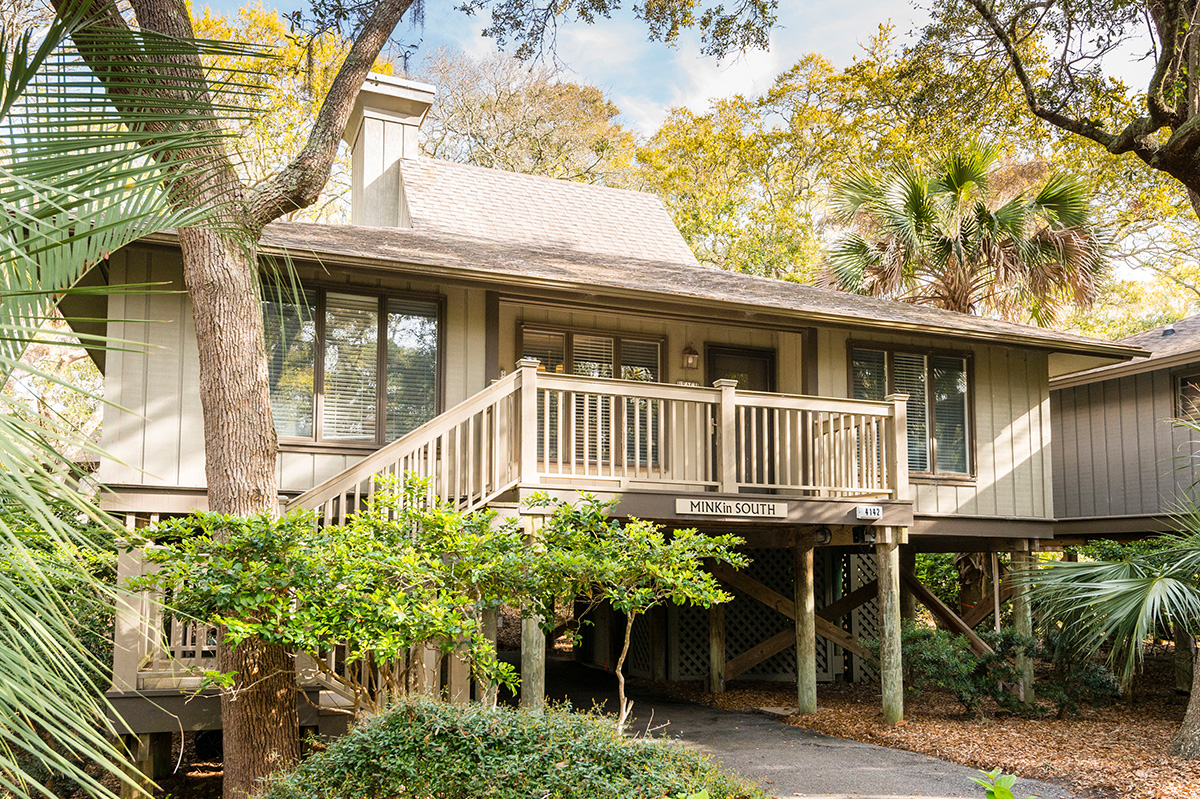
1976 Sparrow Pond Cottages
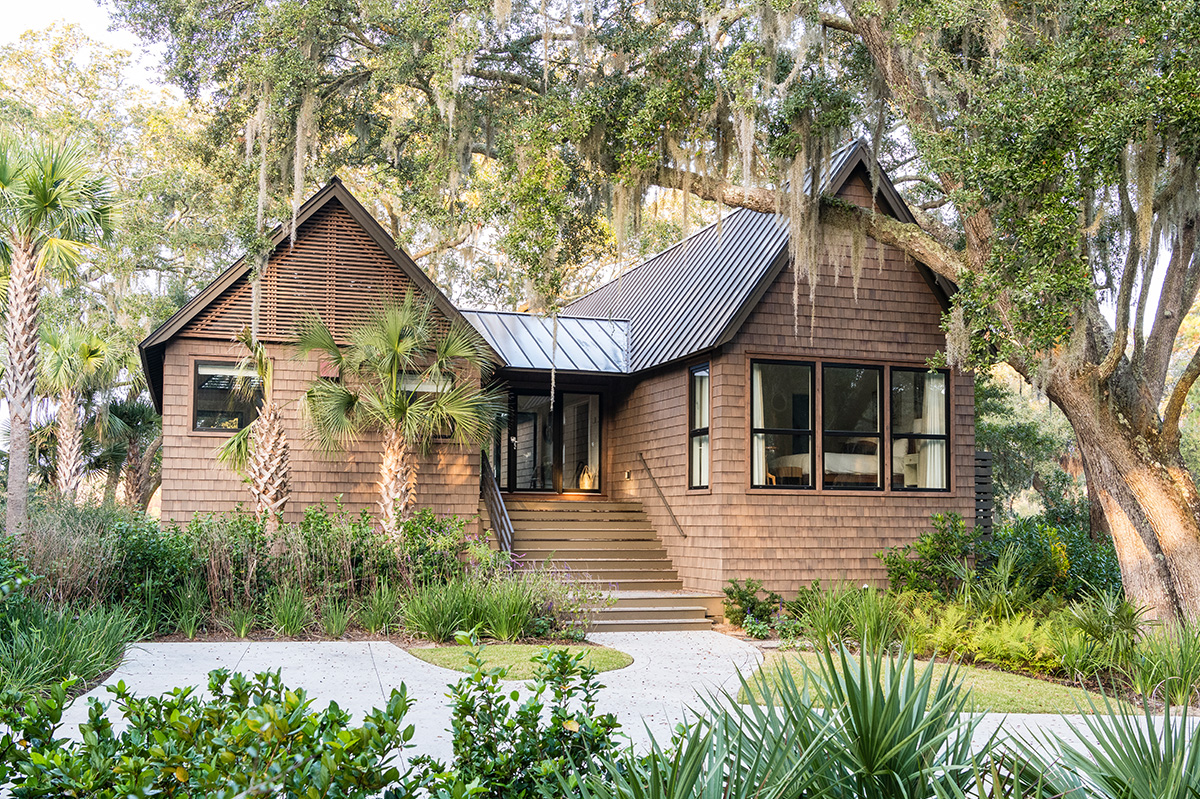
2022 Cottages at Marsh Walk
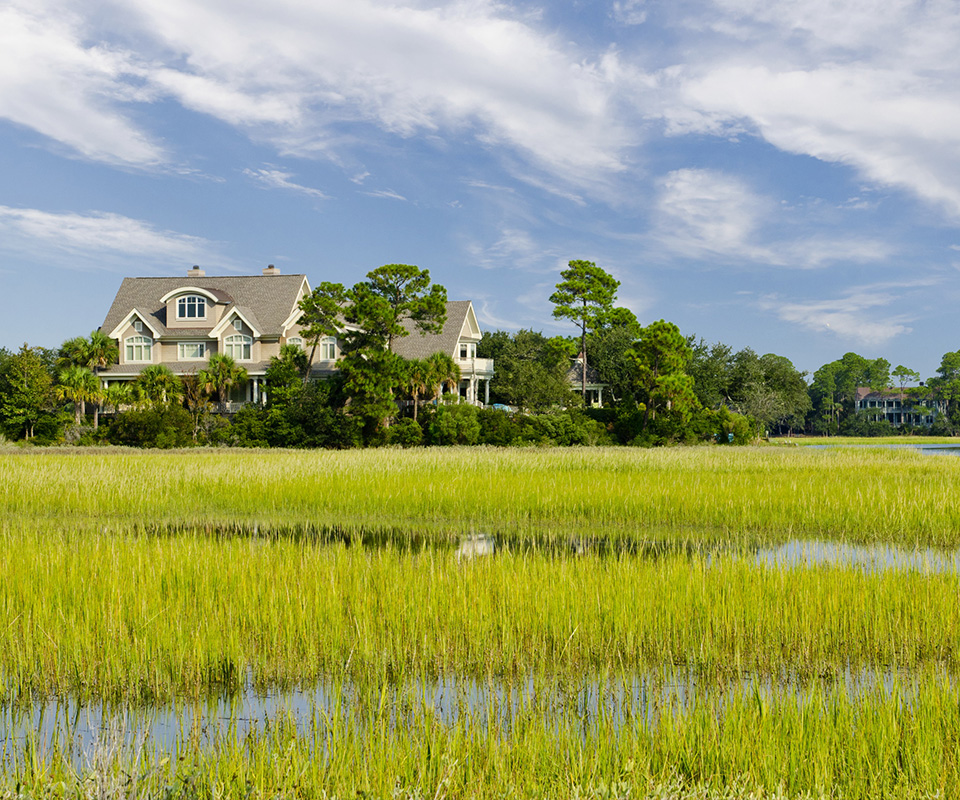
The Future
We are a product of decades of decisions. Communities are similar – made up of people, past and present, who desire to live in a place that reflects their ideals and their lifestyles, with an eye toward conserving precious resources for future generations.
The next time you stroll the beach at sunrise or sunset, take your boat out on the water or walk along one of the Island’s treed trails, stop for a moment. Know that the land on which you stand, the water that laps against your boat, the sea air that you breathe in — has an ancient reverberation to it. There is a wonder to that permanence, and one that will inevitably enchant those who come after us.
Awards and Recognition
ENVIRONMENTAL STEWARDSHIP AWARD SC DEPARTMENT OF NATURAL RESOURCES
AWARD FOR EXCELLENCE IN COMMUNITY PLANNING URBAN LAND INSTITUTE
SOUTH CAROLINA WILDLIFE FOUNDATION LAND CONSERVATIONIST OF THE YEAR
AMERICAN SOCIETY OF LANDSCAPE ARCHITECTS NATIONAL MERIT AWARD FOR ECOLOGICAL PLANNING
The Future
We are a product of decades of decisions. Communities are similar – made up of people, past and present, who desire to live in a place that reflects their ideals and their lifestyles, with an eye toward conserving precious resources for future generations.
The next time you stroll the beach at sunrise or sunset, take your boat out on the water or walk along one of the Island’s treed trails, stop for a moment. Know that the land on which you stand, the water that laps against your boat, the sea air that you breathe in — has an ancient reverberation to it. There is a wonder to that permanence, and one that will inevitably enchant those who come after us.
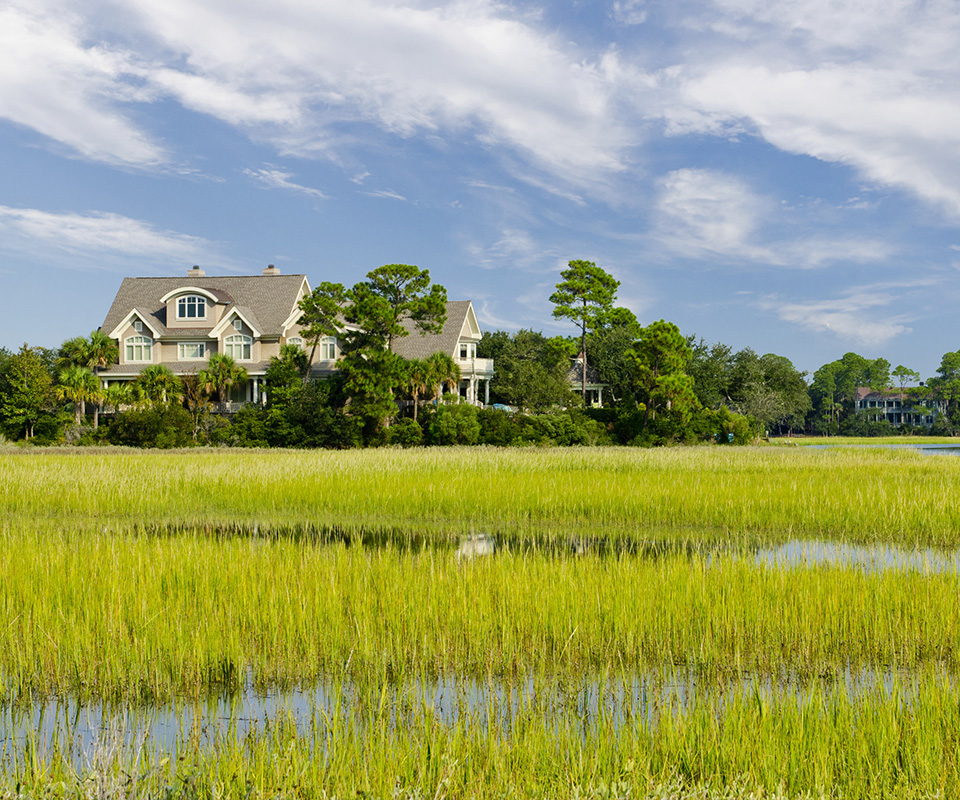
Awards and Recognition
ENVIRONMENTAL STEWARDSHIP AWARD SC DEPARTMENT OF NATURAL RESOURCES
AWARD FOR EXCELLENCE IN COMMUNITY PLANNING URBAN LAND INSTITUTE
SOUTH CAROLINA WILDLIFE FOUNDATION LAND CONSERVATIONIST OF THE YEAR
AMERICAN SOCIETY OF LANDSCAPE ARCHITECTS NATIONAL MERIT AWARD FOR ECOLOGICAL PLANNING



